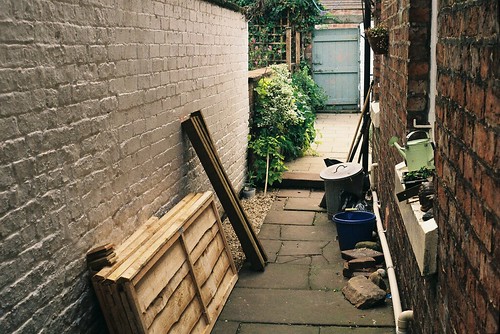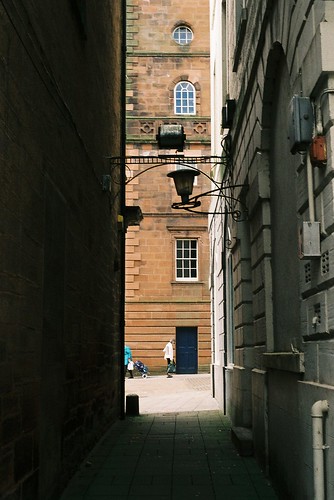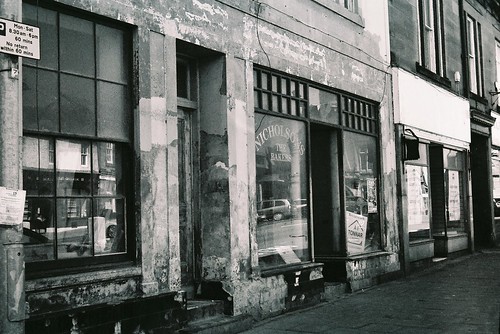Although not as remember as better selling Japanese rivals the Fujica 35 Auto-M is technological tour de force from the early 60’s offering features not seen on even SLR cameras for over another decade

Launched in 1962, This classically styled little gem of a classic fixed focal length rangefinder arrived into the increasingly dominate Japanese rangefinder market. It was one of several Fujica 35 cameras released from the late 50’s to the 1960’s. I own the delightful Fujica 35 automagic which for me is the proto-metered P&S that can give models 2 decades older a run for their money.

Fujica 35 Auto-M Specs
- Lens: Fujinon-R 47mm 1:2.8
- Focus: Coupled Rangefinder
- Metering: Coupled Selenium
- Aperture : f/2.8-16
- Shutter: 1/30-1/500 + B
- EV (100) : 8-17
- ASA range : 5-200
- Filter-Thread: 35.5mm
So what do you get ? We have a fixed length 1:2.8 lens (oddly at 47mm) combined with either Shutter priority automatic exposure or manual control of Copal magic B shutter. The metering as you would expect is powered by a selenium cell mounted beside the rangefinder window (as we’ll see this is a bit of blessing). The camera has several steps to stop you being a doofus. If you set the shutter speed to high or low to take a shot in auto the camera will automatically adjust the speed up or down if it can (failing that the shutter will lock). The central viewfinder square moves to adjust for parallax error on focus. To kick into manual mode you must wind on first and then depress a lever before adjusting aperture. The camera also feature a early EV compensation dial (+/- 1 EV in 1/3 stops) which is impressive for a 60’s rangefinder camera and didn’t become a routine feature on even SLR cameras til much later.

The camera is cable threaded and takes X and M PC sync (you’ll use X with electronic flashes) and there is a cold accessory shoe.
The viewfinder is bright and good with a clear focus spot and if you get one that is in working order it is a generally a good camera to use with accurate crisp exposures and results that rival other rangefinders made even 2 decades later. Exposure is pretty good too and you can lock settings by half depressing shutter.

There are downsides. The camera has that curious underbody winding mechanism seen on other cameras of the era. The rewind knob sits on the side weirdly. For some the issue that there are no speeds below 1/30 is an issue (really ?) but there is a B setting. The metering sits outwith the lens mount so you rely on getting one with a still intact case as a lens cap won’t cover. Also it will be more prone erroneous readings in backlight situations where you could use a lenshood. However it as we will see is handy in that position due to uing filters to accommodate faster film as the camera can only meter up to 200asa.

The fact that the metering isn’t embedded in the lens is a fantastic boon. You can use a neutral density filter (or colour filter with B&W) to drop the effective film speed to make 200asa. This si especially handy for me as I tend to shoot B&W with a K2 yellow or equivalent that has a filter factor of 2 so 400 ISO C41 B&W shoots perfectly at 200 ASA. Only downside is the filter size of 35.5mm which isn’t that common. A stepping ring will struggle due to the lens styling ridges but I have seen extension ring that projects out by 6mm which would allow you to put a step up ring on (although might risk vignetting). Mind you I was able to source a vintage yellow filter without much fuss

Nice camera overall. The obvious comparison is the original Canon Canonet. This too is selenium metered but has a Cyclops arrangement around the lens. It also has a underside winder but is more stylistically a 60’s camera and offers a faster f/1.9 lens and better shutter speed range. It also has meter display in the viewfinder giving you feedback about aperture choices (Mk 2 on) and the Mark3 had a top metered speed of 400asa. Stylistically the Canonet is clearly a a camera of the 60’s whereas the Fujica is more of the 50’s.
That said my Canonet can be temperamental and lock the shutter incorrectly at times despite being CLA’d. The Fujica has always been more reliable in that regard.

It came for £2.99 with case and manual. The rangefinder was off so had to get a specialist CLA (over £40) but now in beautiful condition. You can pick up on eBay for under a tenner as I did if you’re lucky and wanna take a chance but may be best holding off for one in the teens where tested and and finder noted to be on. You’ll need a case to protect meter matrix from light.
Why buy
- Sharp shooter
- Reliable
- EV compensation
- Retro styling
Why not
- Styling a bit dated for some
- No info on settings
- 200 asa max on meter
Alternatives
- Canon Canonet – The classic 1960’s Japanese rangefinder
- Yashica Minister III – Beautiful but uncoupled meter rangefinder
Helpful links
- Fujica 35 Auto-M page at camera-wiki.org
- Manual at Mike Butkus’s site
- Another review at my Rangefinder Film Camera collection
- Rangefinder Cameras group at Flickr

Hi just bought one in a box of 5 old working light meters and 8 other cameras from 50s and 60s all work except one, the lot cost me £12, what a lovely camera it still has the case on the strap containing the lens hood and filter